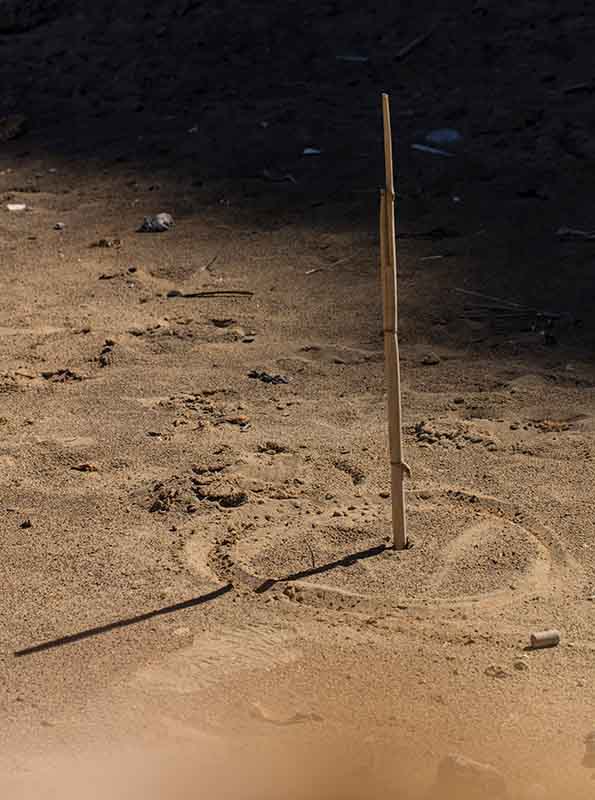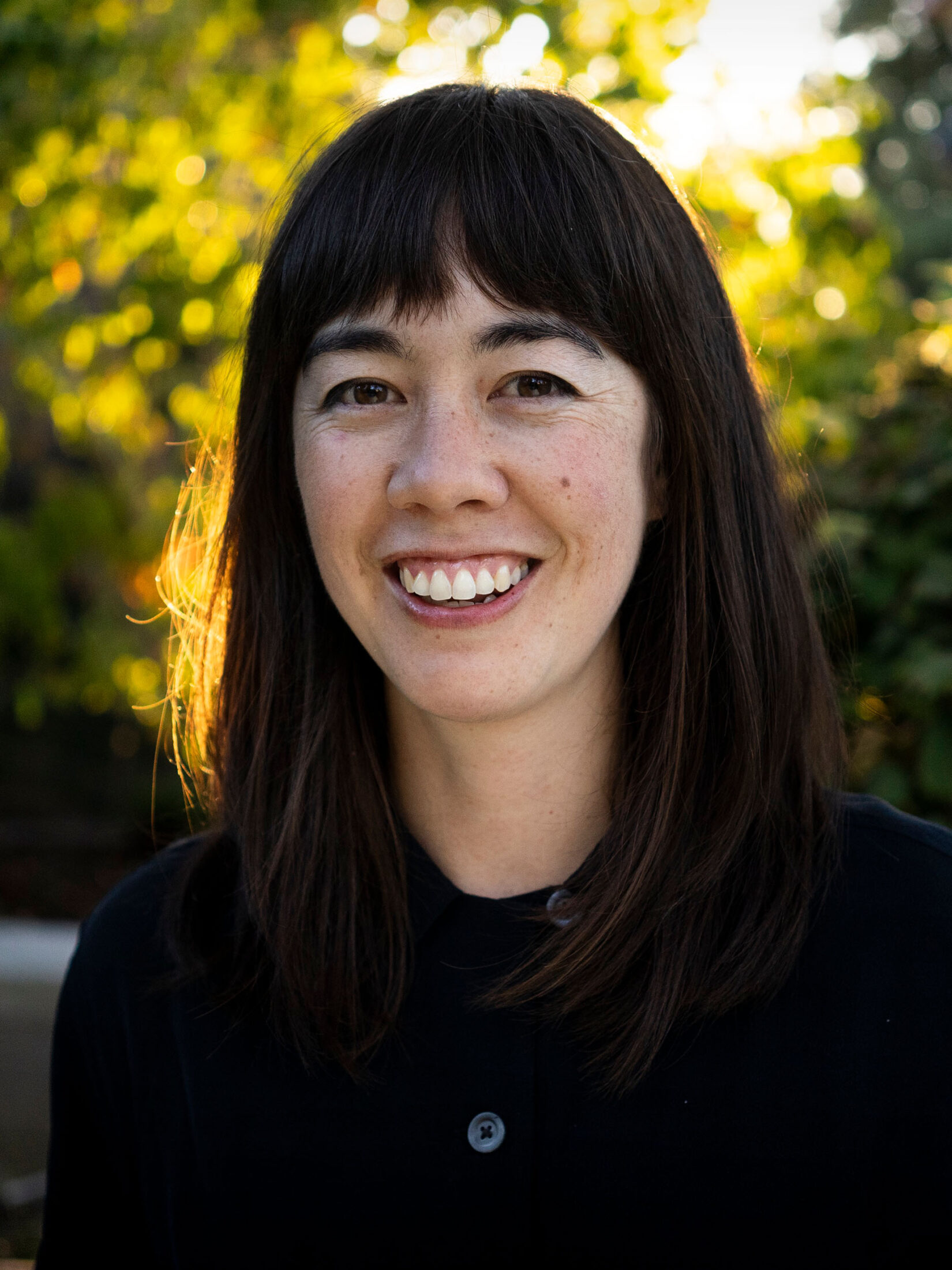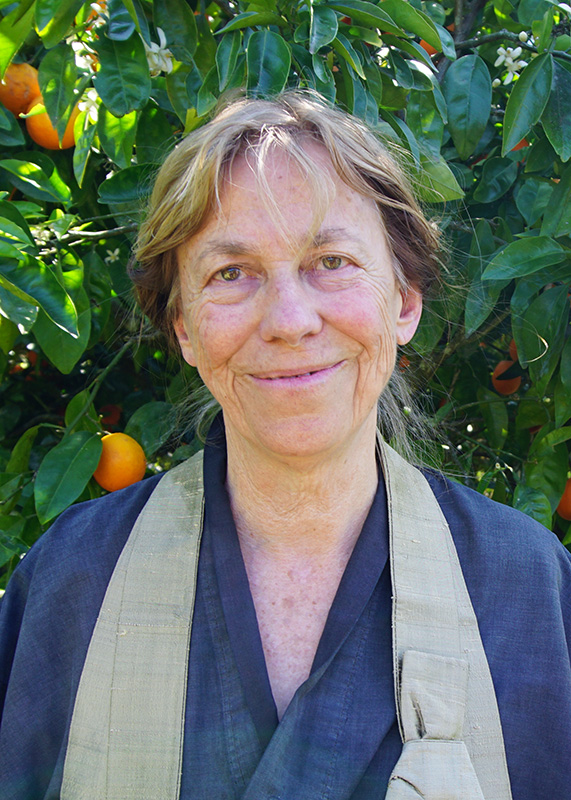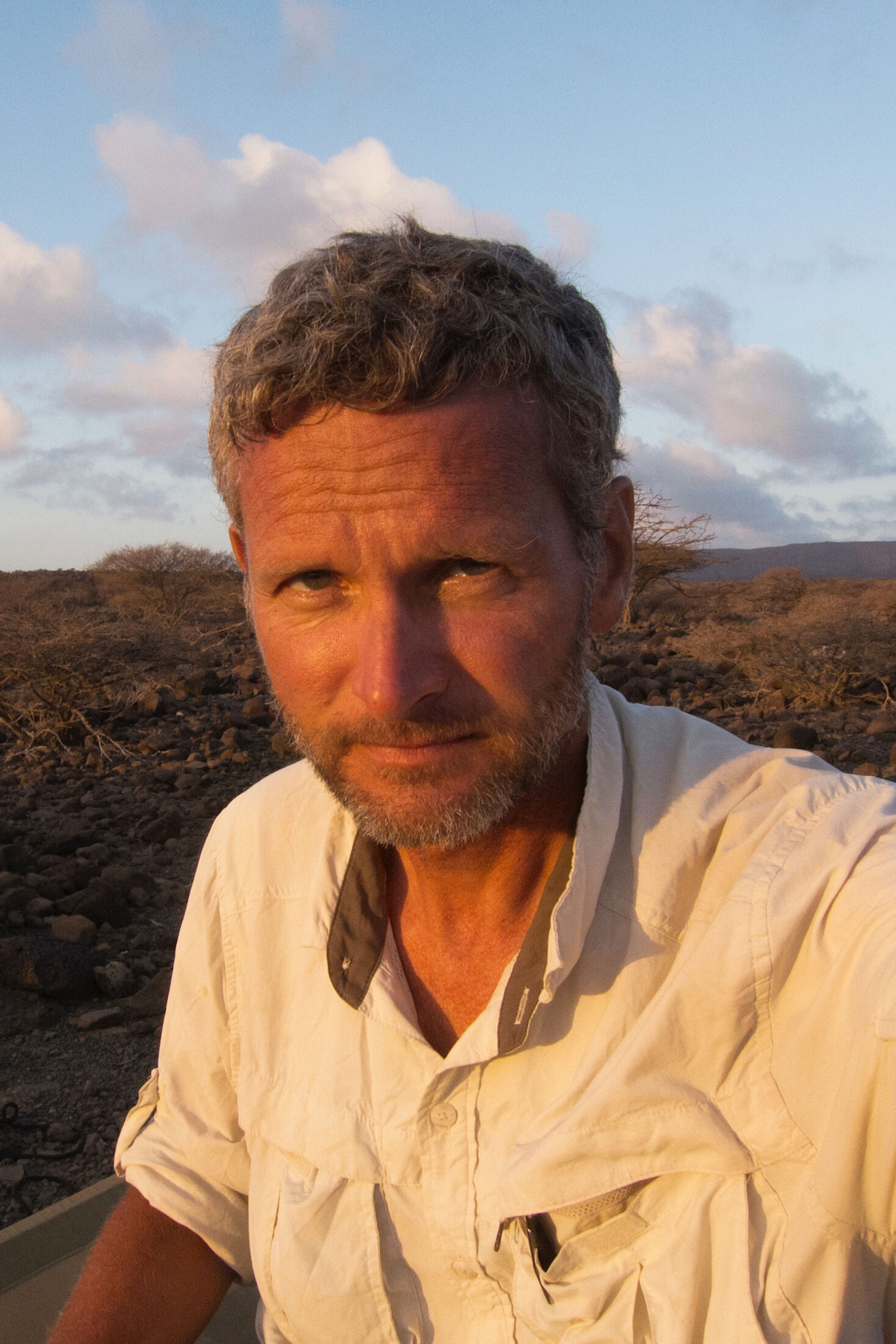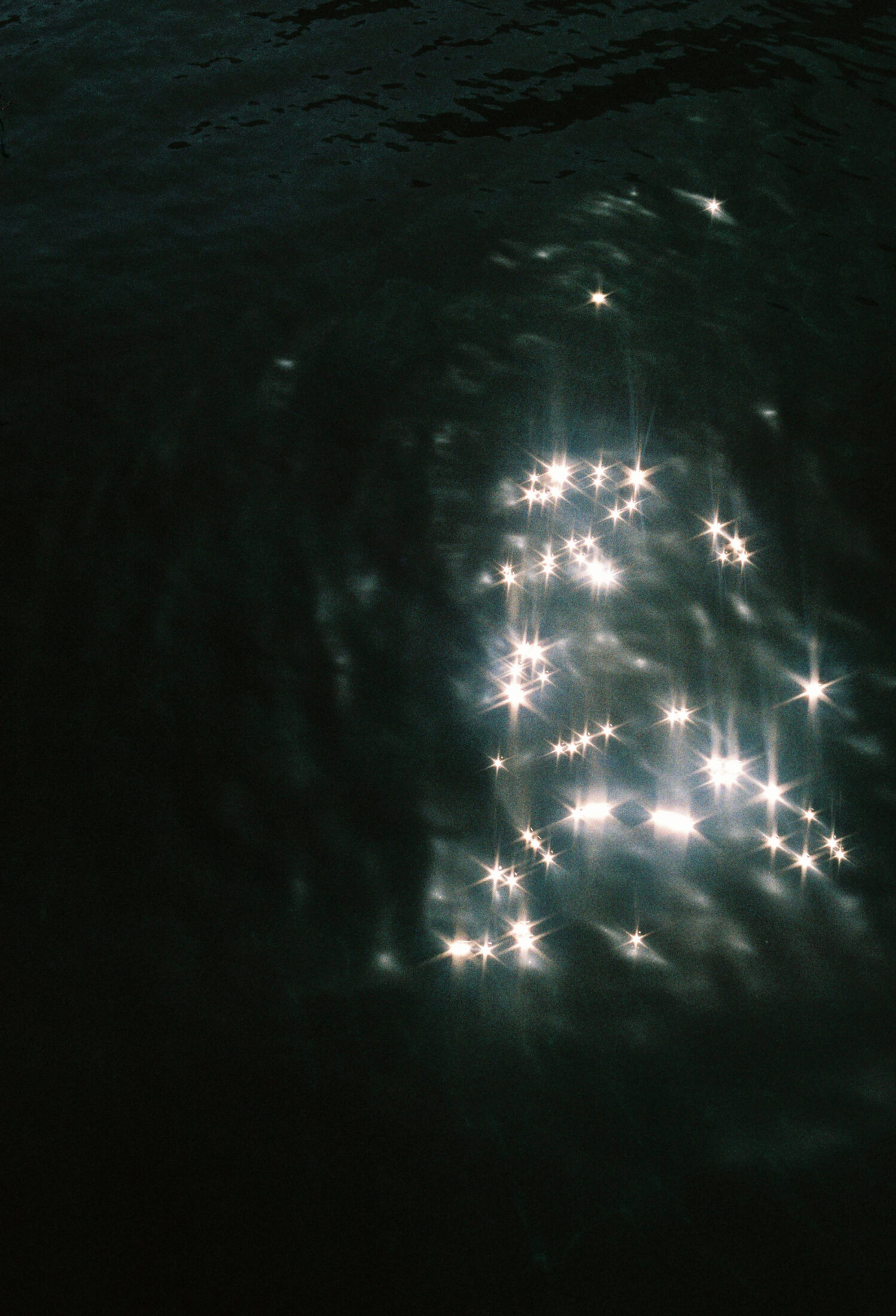
The Axis of All Things
Emmanuel Vaughan-Lee is an author, Emmy- and Peabody Award–nominated filmmaker, and a Sufi teacher. He has directed more than twenty documentary films, including Taste of the Land, The Last Ice Age, Aloha Āina, The Nightingale’s Song, Earthrise, Sanctuaries of Silence, and Elemental, among others. His films have been screened at New York Film Festival, Tribeca Film Festival, SXSW, and Hot Docs, exhibited at the Smithsonian Museum and London’s Barbican, and featured on PBS POV, National Geographic, The New Yorker, and The New York Times Op-Docs. His first book, Remembering Earth: A Spiritual Ecology, is forthcoming from Shambhala in summer 2026. He is the founder, podcast host, and executive editor of Emergence Magazine.
In the first of three talks given at our Remembering Earth Time retreat in Devon, Emergence executive editor and Sufi teacher Emmanuel Vaughan-Lee offers a way to re-attune from a linear sense of time to a relationship with the cycles of the Earth. Attentive to the rhythms of breath and heartbeat that can connect us to the axis of love that runs through all things, we can step into a much more expansive story of time in which spirit and matter are once again braided together.
Transcript
So I’d like to start by reading a few words, a few lines. They’re the lines that actually open the new print edition, on Time, which is at the printers as we speak and will be hopefully finding its way out into the world in the coming days and weeks ahead. So I’d like to start there:
“In an unraveling world, we must begin to reweave our relationship with the Earth by examining our most foundational ways of being. And what is more foundational than Time? Separated from the very fabric of the cosmos, the vast mystery of Time has been distilled into a tool of control. But what happens when Time slips the yoke, unbinds from the mechanical, and becomes free from the finite, the systemized, and the linear? What kind of Time listens and moves in tune with the Earth, travels not in a straight line, but a circle?”
And those are the questions we will be exploring here together over the next few days as we embrace and explore remembering Earth Time, a practice in spiritual ecology. And I want to start with a quote from Rumi, which is in many ways a seed thought for the next few days. It’s a very simple line, but a very potent one: Step out of the circle of time, and step into the circle of love. And to me, that line from Rumi, it says many things; but at the core, it’s an invitation. It is a portal, if you will, to step out of one way of seeing the world and step towards another, which is far more expansive than the one we most often find ourselves in. To step out of one frame of time, a human-centered frame of time, into one that holds no bounds—for it is the circle of love.
And all forms of time—both earthbound and beyond—they are cycles, they are circles: from the smallest to the most grand. They are cycles that exist in relationship with one another. From the mountain to the river, to the tree, to the cherry blossom at the height of its bloom—each one is a cycle. Whether that cycle lasts a minute or a day or a thousand years, it is a cycle. And it doesn’t just spin in a circle of one dimension. It spins in a circle of many dimensions. It is a way of being, not a marker of progress.
And that is an important distinction to make. It is a way of being rather than a marker of progress. Because what we have done to time is we have taken these cycles, these ways of being that exist in relationship—as they have since time immemorial—and we have turned them into markers of progress that function, not as a circle, but as a straight line. That function as a straight line, instead of what they are—which is a cycle, which is a circle, which is an experience of life, and being, manifest in more forms than we can ever count or see. ’Cause they are expressions. They are attributes. They are representations of Earth in all Her forms. In all Her forms.
And if we look closely around us, we see these cycles spinning. We see them as they unfold around us; and we can marvel in them, because they are truly a marvel. The expanse of diversity that exists in the forms of time—they transcend our ability to even comprehend what is possible if we allow ourselves to perceive them: these endless cycles, the mountain or the river, the tree or the cherry blossom at the height of its bloom, or the bird whose song fills the air at that particular moment. Because that particular moment is a cycle of time. The timeless and the timebound and the experience of time merge together to form an experience of being. To form an experience of being. And it is as if each one of these expressions of Her is a song, sometimes expressed as a chorus, sometimes as a single note.
But we have silenced these songs just as we have taken apart these cycles and made them into a straight line, a linear marker from A to B, a mechanized expression of this crazy world we live in. Because the way we relate to time has become a reflection of that mentality, a reflection of that shift in consciousness and way of life, from one that observed these cycles and participated in relationship with these cycles, to one that can barely see them even when they are in front of us—because we only see our own reflection in this linear marker of time, a progress from A to B.
And we have turned time into a system to control, a system to subjugate, a system to colonize and capitalize, just as we have turned almost everything into a system of control and a system to colonize and capitalize—and desacralize—these cycles that are expressions of the Earth that hold no bounds. They are limitless. These cycles are limitless. And we have taken that and we have flattened Her. We have flattened these cycles of time into one expression that has even become atomized, removed from place, removed from the individual expression from which it came into being, and turned it into something uniform; something that has no expression other than the tick of the clock and the mark of progress. We have even become removed from the cycle of day and night. Even the clock has become digitized. No longer does it align with light and darkness. It shines bright all on its own, and it holds us prisoner. Time holds us prisoner.
But of course this story of time is only one chapter in a larger story, a larger story of forgetfulness, a forgetfulness of the sacred nature of creation, of the true nature of Earth and the ways that She expresses Herself. The forgetfulness of what time really is, is part of something that has encompassed our entire world. And at the heart, it is a story of desacralization, to me. Yes, it is a story of colonization, of capitalization, of the subjugation of everything, of turning everything and everyone into something that can be controlled for profit and for greed. It is all of those things. But what lies at the root?
And to me what lies at the root is the desacralization of the Earth and everything that is a part of Her. Every cycle that exists has been desacralized. And time is one of those many forms. But it is a foundational one. It is a foundational one. Because within it, it holds so much. Because time is not this marker of progress from A to B; it is not a way to control. It is a multidimensional expression of mystery, one could say, that exists in more forms than we will ever know. And we have taken that mystery, and we have tried to make it, not just known in a way that removes it from any of its original essence, but to simplify it and to rip it from its roots, and say, “It is mine, and I will use it to get more and more and more and more.”
And what was once a sacred expression that lasted a moment or a whole year, that lived as a cycle in constant turning, an expression of all the myriad other cycles that exist in relationship—because nothing exists in isolation; it is a basic fundamental truth of existence, whether that be expressed as an ecological reality or a spiritual one. And time—it encompasses both. It is both physical and metaphysical. It encompasses both. And we have desacralized it. We have made it about us, an expression of us in all the wrong ways, instead of what it could be, which is a great conversation of cycles meeting cycles; because we are a cycle too. In fact, we are many cycles, just as within the cherry blossom at the height of its bloom exist myriad other cycles; and the mountain that has been there for thousands of years, time-layered rock upon rock, is a cycle within cycles, within cycles. And the tree exists in relation to the mountain and the cherry blossom and the river, even if it is out of its immediate environment. The cycles do not hold any limitations. They exist outside of space and outside of our concept of time. They exist in a broad field of relationality, all of which has been silenced—just as the voices that once filled the air are now getting silenced.
And to me, this is the real story of our time, this desacralization of the living Earth and all that is a part of it. And to me, a practice in spiritual ecology—these words we have had to put together to try to understand what is happening—they offer a framework to understand what is unfolding, to look to the core, to go to the root, to understand that it is not an ecological crisis or an economic crisis or a social crisis or a political crisis. It is all of those things. But at the root it is a spiritual crisis.
But then we have to understand what a spiritual crisis is. We even have to understand what the word “spiritual” is, which as we know can mean many things. It is a frame to understand the root of separation at the core of this unfolding. And it is also a response. It is a way to respond to what is happening, not just to understand that the root of what is unfolding is a spiritual crisis, a separation that we have allowed to unfold that has removed us and severed us from what is most primal—this connection with the Earth, this kinship we have with Her; that has allowed us to grow into great illusions of grandeur. To think that we could flatten Time and turn these cycles into a straight line. What hubris, what arrogance.
And this understanding of this root, this spiritual root. What does it mean? To me, it means the separation of spirit and matter. The separation of spirit and matter. ’Cause it was not always so. And yes, the story of that separation is a long one and a complex one. And one we could not explore in one evening, let alone many evenings, without leaving most of it out. ’Cause it encompasses human history for the last few hundred, and even thousand, years or more. The separation of spirit and matter. The sacred nature of creation—to remove ourselves from that; to say we are not that; we are above that; we can do whatever we want with this matter, ’cause it is not part of us. To separate spirit and matter has allowed us to think we could do almost anything.
But then that leads us down a deeper road, which is to understand: What is at the core of spirit and matter? What is at the core of the sacred nature of creation? What is at the core of every cycle of time? And for me, there is really only one response to that. And here I must turn to Rumi: step out of the circle of time, and step into the circle of love. Because to me, at the core of everything, the sacred nature of creation, there is love; not love in the limited understanding that we hold in our human-only-centered experience, but love as the axis of all things, an energy that flows between the physical and the metaphysical, that once brought spirit and matter together, that held it like glue. Because this love, it exists inside of us in numerous ways. And it exists inside every form of creation in numerous ways, in every cycle of time: in that cherry blossom, at the height of its bloom, there is love.
And this is the even deeper crisis that I feel has unfolded: forgetting the importance of love as the primary central axis of all things. To forget that love is present in everything. To even think that we can control love, not just time. We make love a human experience, limited to our romantic or familial experience. Even if that is beautiful and valuable, it is limiting.
And this journey of remembrance, which encompasses far more than just Earth Time, to me, is about remembering that truth. Remembering this core, this axis, that is at the center of all things. It is about awakening something inside of ourselves. It has always been there, even if it lies dormant, even if it is hibernating, waiting, waiting, waiting for us to realize that it is there—this primal covenant of relationship that always existed between every single thing in this Earth, this primal covenant of relationship that we covered over with our forgetfulness and our greed and our belief that we could control the most fundamental ways of being. That we could shift the fabric of creation, that we could flatten Time, that we could control these ways that are much more than ways. We don’t even really understand them. They are beyond purely the scientific realm, because to me they are part of an expression of mystery.
And we have forgotten the importance of mystery, the value of the unknown. We want to discover everything. We want to claim everything. And this process that we are going through, it is also a process of humility, to make us realize that we know so little. We don’t even know how to care for what cares for us. And instead we barrel forward, throwing mystery to the left, the living Earth to the right, as we make this endless process of time and progress unfold in front of us in a straight line that cuts as it unfolds.
But this time must shift now, this way of being that limits its understanding of what it is. Because we can turn so quickly when we awaken to something so essential and engage with it. And engage with it. And there, the magic—and I think magic is incredibly important—can come alive. And I don’t mean magic in any sort of limited hocus pocus kind of way. I mean magic being what binds spirit and matter together. The dance that can exist between the different forms of creation that are playing out all around us outside these windows, effortlessly.
It is for us that we must make effort. It is for us that we must engage; for us that we must remember what magic means. That love is the fabric and the thread and the needle that can weave together spirit and matter, that can help unfurl time back into a cycle. Because once it is present, then this ancient covenant of relationship—it is there. You don’t have to create it, you don’t have to build it. It is there. The veil is lifted through the remembrance of love. It is a fundamental mystical truth expounded in every single form that mysticism and spiritual life has ever expressed itself in. All roads lead in the same direction: back to this core Truth. And it is as present in the ecological sphere around us as it is in the human heart—this essence of love that, if we turn towards it, ignites this magic that can weave a spell that binds the worlds back together.
Because there is a healing that must be done. There is a healing that must unfold. And these most foundational ways of being, of which time is one, must be part of this. We must look to these ways and uncover and uncover and uncover, and remember and remember and remember, and weave this thread back into the core of the world through the simple awakening of what is most essential inside of us—this fundamental truth that love exists. It is there. You don’t even have to look too deep. Love as an energy, love as a source, love as the central building block, an ingredient that is present in everything. Because the expressions we see around us of interconnectedness, whether they be a mycelial network or the way that water moves through the cycle—and that is another cycle of time—they are reflections, if you will; they are expressions, if you will, of something deeper, more foundational, more fundamental, more primal, more ancient, even, which is this braiding together of spirit and matter that love makes possible. Because it is love that functions as the mycelial network, or the cycle of water, or the rising and the setting of the sun, and the cycles of the moon.
All of these cycles, they mirror the ways that love expresses itself inwardly. And we have forgotten those truths as well. We have forgotten those forms of time. Everything has become so dry, so devoid of life, so devoid of mystery. But magic, and the magic of love, and the magic of Time—if we see it for what it is, and we begin to not just remember it, but to participate in its remembrance. And there’s a distinction, because we must move from the observer to the participant. We cannot stand on the sidelines looking in, even if we start to recognize that these forms are actually cycles, and these cycles are expressions of time. And these expressions of time are expressions of love. We cannot just look at this from the outside. We must move from the observer to the participant. We cannot just seek nature connection, but we must participate in nature communion; because spiritual ecology at its core is about communion just as much as it is about love, just as much as it is about braiding together these worlds of spirit and matter, and returning to an understanding of what the sacred nature of creation is.
It is about communion, because love does not exist in isolation. Love exists in relationship, just as time exists in relationship, just as the cherry blossom at the height of its bloom exists in relationship. And real relationship is ultimately about communion. And that is something we have banished, just as we have banished these cycles of Time and made them about us.
And communion does not belong only in a church or a mosque or a temple, or on the meditation cushion or in the prayers that we utter from our lips, or even within our hearts. Communion is a form that exists by itself, if we allow it to. It exists by itself, if we allow it to. If we allow the magic of creation to actually unfold as if it is supposed to, instead of limiting it, controlling it, and turning away from it. It is a magic. It is alive. And while we can talk about the importance of the animate nature of creation, and the animate nature of Earth, and the more-than-human world, and all their voices being alive, and the importance of recognizing that, if we don’t recognize what lies beneath that, then we are still on the sidelines: the observer looking in; not the participant. We are still the observer. We see a little bit. Yes, it is alive, but what does it mean to be alive? Why is it alive? Those questions we do not ask enough. And if we answered them, we answered them from only one perspective: from matter, but not from spirit. And we must bring those questions together, and we must bring those answers together, just as we must braid those worlds back together. The braiding of spirit and matter. And the remembrance of Earth Time.
Even in the simple recognition of, and participation in, what one cycle of that might look like—it can break down the dam and let something that flows naturally, again, flow naturally. And that’s the thing, it doesn’t take much. It’s not some mystical journey that one needs to embark upon for one’s whole life. One simply has to remember, and then follow that, using the simple cycles that already exist inside of us. And there are many. Because, as I said, we are cycles of time, just as the many cycles I have mentioned that exist around us are cycles of time. We are cycles of time, whether that be the heartbeat or the breath—to name just two. And if we are able to put our attention there, to follow that cycle, to allow it to do its work and let the mind be drowned out, then that cycle immediately attracts and works in relationship to other cycles. That is the science. That is the mystical science, you might say: the cycles inside of us, the cycle of the breath, the cycle of the heartbeat.
Two of the cycles that have been used for millennia by cultures and traditions and systems, the world over, to do just what I am saying: to braid back together these worlds that we have torn apart, that we have veiled; to take us out of our own limited sense of self and see and experience a world that is so much vaster and more expansive than what we can ever imagine if we stay caught within the cycle of forgetfulness, rather than embracing the cycle of remembrance and the cycles that are inside of us that can take us there. That can take us there.
The heartbeat and the breath: to breathe in and breathe out, and recognize what that means and how ancient and primal that is. And that behind every breath there is that same substance of creation that is love, that exists in every other cycle of time, and otherwise. It is the axis of all things. Step out of the circle of time, and step into the circle of love. You step away from yourself, and therein lies a world of mystery and magic; of creation and destruction; of cycles upon cycles unfolding in relationship. And this hidden world doesn’t need to be hidden. It can again become known, if we turn our attention to these most foundational ways of being. If we remember Earth Time. If we remember the many, many, many, many forms that exist and use these simple cycles inside of ourselves like keys that unlock our ability to see, perceive, and relate—and commune and be in relationship with—these multiple forms, these cycles upon cycles, upon cycles.
And in these next few days together, I want to spend time together returning to these cycles: to the cycle of the breath, to the cycle of the heartbeat, to the cycle of one footstep in front of another footstep. Simple cycles that are basic, fundamental ways that human beings move, breathe, stay alive, mark time, and also express mystery, so that we can be the key that allows us to step into these different cycles, that allow us to remember Earth Time; so that we can participate in a process of healing, and not just understand a crisis and want to respond outwardly, but see that we can also be a participatory process in that healing, through the return of these ancient cycles and the activation of them—as simple as the in-breath and the out-breath, and the beat of the heart. And from there, all can be revealed; because it is through the mystery of Time that we remember that we are of the Earth, a part of the endless turning of the wheel, the continuous rhythm, the call and the echo.
So, if you will, I ask you all to close your eyes and draw your attention to your breast, to your chest, to the space in which your heart resides, and to place within it the feeling of love. And to do that, perhaps evoke someone you love, a place you love. It doesn’t matter what it is. What matters is that it evokes a feeling of love within your body, within your heart. And as you do that and you begin to feel that love permeating your breast, permeating your body, feeling that love in both the physical heart and the space behind it, the space beyond it—the spiritual heart—breathe in and breathe out. And as you keep doing that, breathing in and breathing out, visualize connecting that love that you have awakened in your heart with the breath, so that each expression of the breath—each inhalation and each exhalation—becomes an expression of that love, a movement of that love, into a cycle, into a circle, into a form of time. And there the braiding of spirit and matter can begin, as love is infused with breath that permeates the body and fills the room, and a simple cycle of the breath becomes infused with the power and majesty and mystery of love. And we see how this is just one of many of the cycles of time that—with our attention, with our consciousness—can become a vehicle of love through which we can weave the worlds back together.
But we must begin with ourselves, establishing this ancient simple way of being. For to commune with the cycles of time that we see around us, real must meet real. And those cycles, they are already real. There is no veil covering their nature. And it is our nature that must be uncovered, our love that must return to the surface and be infused in these basic, simple cycles that reveal the real. So that real can meet real. Because to commune, it must be real. And it begins with the breath, and it begins with the heart, and it begins with ourselves.
